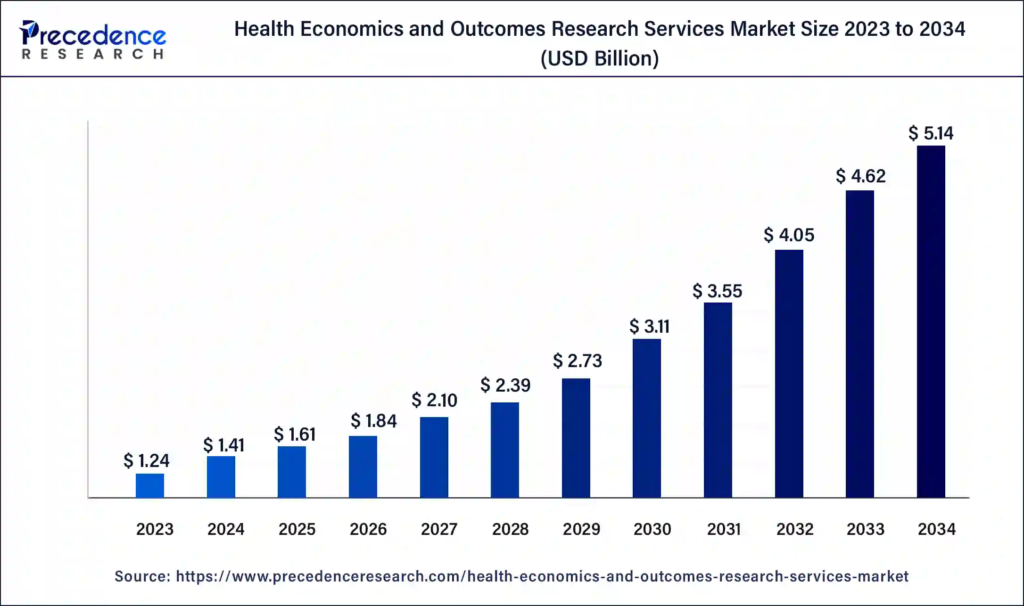How Medical Writers Simplify HEOR Data
Health Economics and Outcomes Research (HEOR) is a cornerstone of modern healthcare decision-making. It provides critical data to assess the value of healthcare interventions like treatments, therapies, and diagnostics. However, HEOR’s full potential can only be realized when its insights are effectively communicated. Medical writing bridges the gap between complex data and real-world decision-making, enabling stakeholders to make informed choices that improve patient outcomes.
Medical writers serve as translators, transforming intricate HEOR findings into clear, actionable, and engaging narratives. As the healthcare industry continues to evolve, the demand for skilled medical writers specializing in HEOR is growing rapidly. This article explores the intersection of medical writing and HEOR and offers tips for creating impactful communications that resonate with diverse audiences.
What Is HEOR, and Why Does It Matter?
HEOR evaluates healthcare interventions’ clinical, economic, and humanistic outcomes. HEOR provides a holistic view of a treatment’s value by examining cost-effectiveness, budget impact, real-world evidence (RWE), and patient-reported outcomes (PROs). However, raw data alone cannot drive change. Policymakers, clinicians, payers, and healthcare providers need tailored, accessible insights to translate HEOR findings into policies and practices that benefit patients. This is where medical communications, including writing and editing, play a pivotal role.
Health Economics and Outcomes Research Services Market Size, Share, and Trends 2024 to 2034

Source: Health Economics and Outcomes Research (HEOR) Services Market https://www.precedenceresearch.com/health-economics-and-outcomes-research-services-market
The Crucial Link Between Medical Writing and HEOR
HEOR data can be dense and technical, often requiring interpretation to make it meaningful for stakeholders. Medical writers excel at presenting data in understandable and actionable ways.
- For Clinicians: Medical writing ensures clinicians understand how therapies impact patient care and clinical workflows.
- For Payers and Policymakers: Writers craft compelling arguments about cost-effectiveness and long-term value.
- For Patients: Medical communications humanize data by highlighting patient-centric benefits like improved quality of life.
By weaving together scientific, economic, and patient-centered narratives, medical writers bring HEOR data to life.
Why Patient-Centricity Is the Cornerstone of HEOR
Patient-centricity has become a non-negotiable in healthcare. High-value systems prioritize the patient voice in research, development, and care delivery. Medical writers amplify this voice by ensuring patient-reported outcomes and experiences are central to HEOR narratives.
For example, when evaluating a chronic disease therapy, a medical writer may emphasize how the treatment improves mobility, reduces fatigue, or enhances daily living. These details make data more relatable and impactful.
Key HEOR Communication Strategies
To effectively communicate HEOR insights, medical writers should employ the following best practices:
1. Clarity and Accessibility
Avoid jargon and use plain language tailored to your audience. For instance, clinicians may appreciate more detailed scientific explanations, while policymakers may need high-level summaries.
2. Visual Storytelling
Complex data can overwhelm your audience. Visual aids like charts, infographics, and tables can make economic models, patient outcomes, and cost-effectiveness analyses more digestible.
3. Patient-Centric Narratives
Incorporate patient quotes, case studies, and anecdotes to humanize data. For instance, showcasing how a therapy improved a patient’s ability to work or engage with family can resonate deeply.
4. Outcome-Driven Messaging
Focus on the tangible benefits of HEOR findings. Highlight real-world outcomes, such as reduced hospitalizations, improved adherence, or long-term cost savings.
5. Audience Customization
Different stakeholders have unique priorities. Tailor your content to address these priorities effectively. For example:
- Healthcare Providers: Focus on clinical benefits and workflow impact.
- Payers: Highlight cost-effectiveness and budget impact.
- Patients: Emphasize quality-of-life improvements.
Real-World Scenarios: HEOR in Action
Chronic Disease Management: A Balanced Approach to Cost and Care
In chronic conditions like diabetes, presenting HEOR data that balances cost and care is essential. For example, a diabetes drug that reduces hospitalization rates while improving patient adherence creates a strong case for adoption. Medical writers can craft compelling narratives for stakeholders by framing data around both clinical benefits and long-term economic value.
Launching Biosimilars: Educating Stakeholders for Adoption
Biosimilars face resistance due to misconceptions about safety and efficacy. Medical writers play a key role in dispelling these myths by creating informative materials for providers, payers, and patients. Educational resources might include FAQs, infographics on cost savings, and case studies showcasing successful adoption.
Oncology Value Assessments: Bridging Costs and Patient Needs
Oncology treatments often involve high costs. Medical writers can create a more comprehensive value story by integrating economic models with patient-reported outcomes. For instance, emphasizing how a therapy reduces symptom burden or enhances quality of life can influence reimbursement decisions.
A Pharmacist’s Perspective: Bridging Science and Patient Care
As a pharmacist with expertise in pharmacoeconomics and formulary management, I’ve seen firsthand how medical writing transforms HEOR data into actionable insights. During formulary reviews, presenting cost-effectiveness data alongside patient-centric outcomes often tipped the scales in favor of high-value therapies. This dual focus on economics and patient care demonstrates the power of clear, strategic communication in shaping healthcare decisions.
Conclusion: The Future of HEOR and Medical Writing
Medical writing is more than a technical skill—it’s a strategic asset that bridges clinical evidence, economic data, and patient experiences. Medical writers drive meaningful change by embedding patient-centricity and clarity into HEOR communications. Whether you’re a medical writer, pharmacist, or healthcare executive, your role in translating HEOR data into actionable insights is pivotal. By prioritizing patients and crafting compelling narratives, you can inspire decisions that improve outcomes, enhance access, and deliver value across healthcare systems.
References
- Zwack, C. C., Haghani, M., & de Bekker-Grob, E. W. (2024). Research trends in contemporary health economics: a scientometric analysis on collective content of specialty journals. Health economics review, 14(1), 6. https://doi.org/10.1186/s13561-023-00471-6
- Drake T, Baker L, Rothermel C. Growth of Health Economics and Outcomes Research and Real-World Evidence in Medical Communication, and Opportunities for Medical Writers. AMWA. 2024;39(4). doi:10.55752/amwa.2024.412
- American Medical Writers Association (AMWA). 2023. Compare and Contrast: The Growing World of Health Economics and Outcomes Research (HEOR). https://blog.amwa.org/compare-and-contrast-the-growing-world-of-health-economics-and-outcomes-research-heor
As I always say…
Medical communication offers diverse paths – from medical writing and editing to CME development and content strategy – all merging healthcare expertise with communication skills. While success requires time and dedication, the field rewards those who continuously develop their expertise, practice their craft, and build professional connections.
Need help or have any questions?
📌 Visit: KJC Media Health 📌 Subscribe: MedComms Collective Newsletter for expert tips and industry insights. 📌 Join the conversation: Connect with me on LinkedIn 📌 Email: contact@kjcmediahealth.com 📌 Book a one-on-one mentoring session: Gain clarity and guidance.
Thanks for reading—now go out there and thrive as a freelance medical communicator – writer or editor!





No responses yet